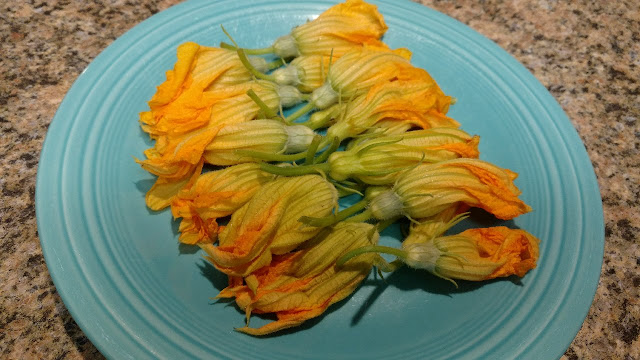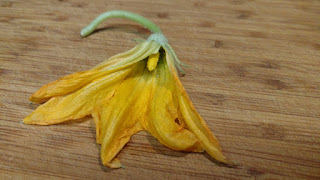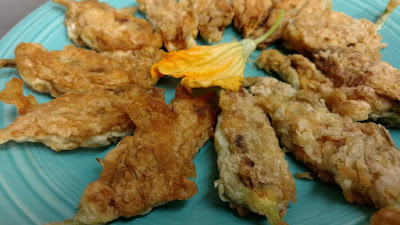
Recipe: Stuffed squash blossoms with mushrooms and blue cheese

|
Do your zucchini have lots of flowers but no squash? Eat the blossoms.
Many of those squash flowers (especially the early ones) are male; they’ll never form fruit. But they are edible -- and delicious.
Squash blossoms can be chopped, sautéed and added to quesadillas, frittatas and omelets or used as filling in chilies. They can also be used in soups and raw in salads. Before cooking, remove the thin green sepals at the base of the flower; they tend to be chewy.

|

|
Comments
0 comments have been posted.Sacramento Digs Gardening to your inbox.
Sites We Like
Garden Checklist for week of July 21
Your garden needs you!
* Keep your vegetable garden watered, mulched and weeded. Water before 8 a.m. to reduce the chance of fungal infection and to conserve moisture.
* Feed vegetable plants bone meal, rock phosphate or other fertilizers high in phosphate to stimulate more blooms and fruiting. (But wait until daily high temperatures drop out of the 100s.)
* Don’t let tomatoes wilt or dry out completely. Give tomatoes a deep watering two to three times a week.
* Harvest vegetables promptly to encourage plants to produce more. Squash especially tends to grow rapidly in hot weather. Keep an eye on zucchini.
* Pinch back chrysanthemums for bushy plants and more flowers in September.
* Remove spent flowers from roses, daylilies and other bloomers as they finish flowering.
* Pinch off blooms from basil so the plant will grow more leaves.
* Cut back lavender after flowering to promote a second bloom.
* It's not too late to add a splash of color. Plant petunias, snapdragons, zinnias and marigolds.
* From seed, plant corn, pumpkins, radishes, winter squash and sunflowers.